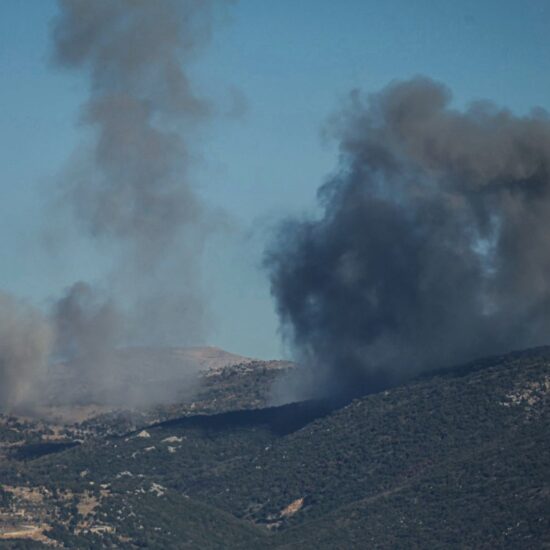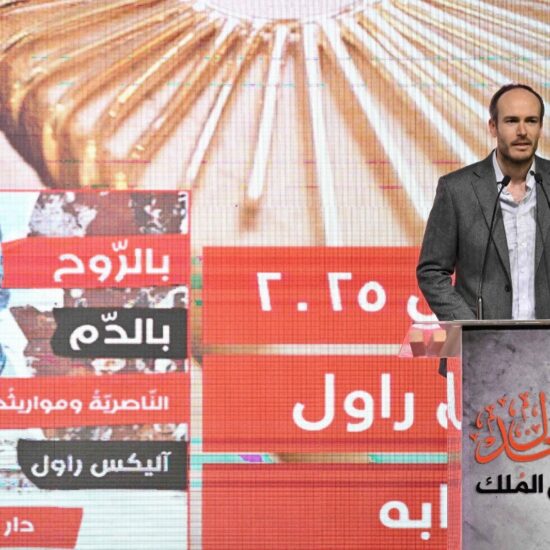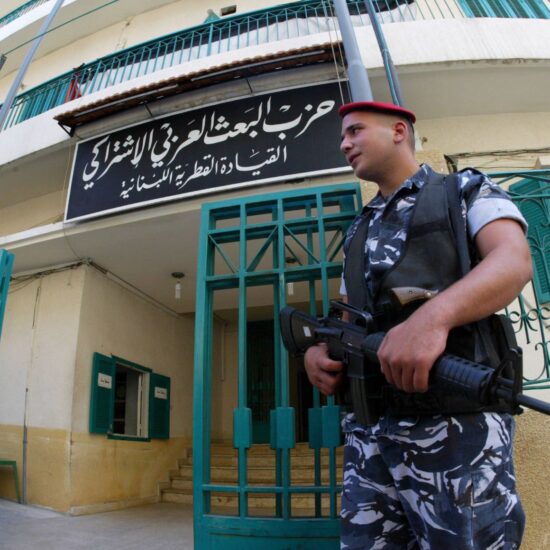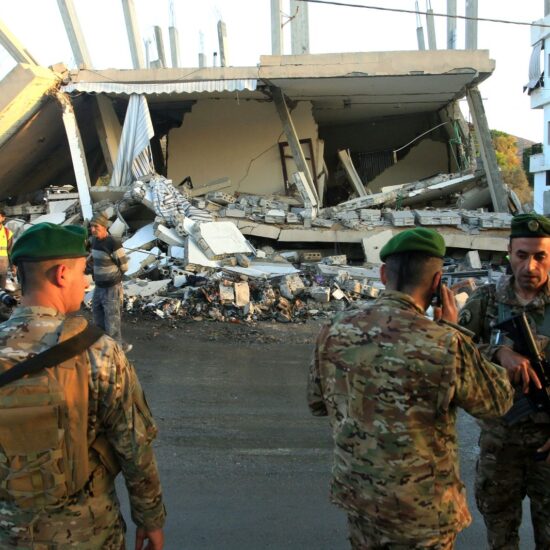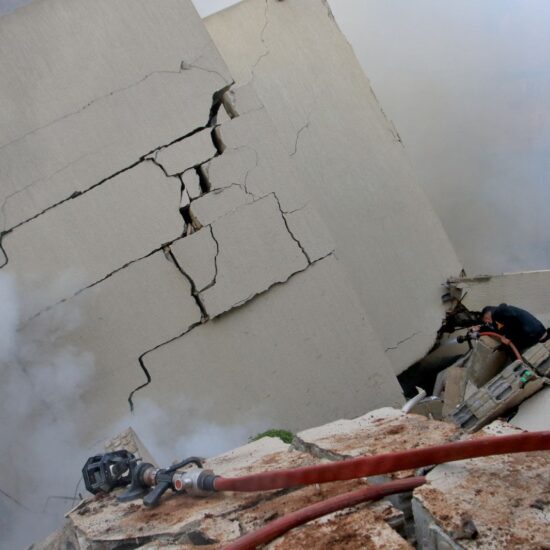
Lebanon is facing a severe humanitarian crisis marked by widespread displacement, destroyed infrastructure, and political instability, with rising tensions over the prospect of a ceasefire that seems to be looming ahead
Efforts to secure a ceasefire between Israel and Hezbollah have reached a critical stage, with a regional source stating that a deal is “very close.” However, US and Israeli officials have cautioned that it is not yet finalized. “We are moving in this direction, but there are still some issues to address,” a spokesperson for Israeli Prime Minister Benjamin Netanyahu said. Talks have reportedly focused on a US-Israeli proposal for a 60-day pause in fighting, which Hezbollah is currently considering.
Amid ongoing negotiations, violence along the Israel-Lebanon border has intensified. Israeli forces are reportedly attempting to encircle the southern town of Naqoura and position themselves in Bayda, a strategic location about 8 kilometers from the border. Bayda, which overlooks the coastline between Naqoura and Tyre, holds significant tactical value. The escalation highlights Israel’s strategy of negotiating “under fire,” a move analysts see as leveraging talks while maximizing pressure on Hezbollah.
Since mid-September, Israeli attacks have killed more than 3,000 people in Lebanon, according to Lebanese Health Ministry figures. The rising death toll underscores the urgent need for a ceasefire, as communities in the south face mounting devastation. Ground clashes along the border have also increased, with the National News Agency of Lebanon reporting intensified Israeli operations aimed at consolidating control in key areas.
US envoy Amos Hochstein recently traveled to Lebanon and Israel for high-level meetings, describing the talks as “positive” despite unresolved issues. Western-led diplomatic efforts have gathered momentum in recent days, with mediators expressing cautious optimism about the prospects for de-escalation. While progress has been made, significant challenges remain, with Israeli officials emphasizing their determination to maintain military pressure until an agreement is reached.
In Lebanon
Towards Tel Aviv: Israel’s military reported that Hezbollah has launched approximately 250 rockets across the border from Lebanon, marking one of the most intense attacks on Israel since hostilities escalated in September.
The rocket fire caused injuries and damage to buildings in northern and central Israel, with some incidents reported near Tel Aviv, according to Israeli police.
The bombardment came in response to an Israeli airstrike on central Beirut the previous day, which the Lebanese Health Ministry confirmed had killed 29 people.
Questioning the war: During Sunday mass, Maronite Patriarch Cardinal Mar Bechara Boutros Al-Rahi condemned the war for targeting civilians, leaving 1.5 million displaced, and causing immeasurable destruction. He criticized Lebanon’s political paralysis, noting the absence of a president for two years, a parliament failing to elect one, and a divided caretaker government.
Al-Rahi questioned the legitimacy of ceasefire talks in this vacuum, asking, “Who is negotiating, on whose behalf, and for whose benefit?” He called the lack of leadership deliberate and devastating for the state and its people.
Lebanese army targeted: The Israeli army struck a Lebanese Armed Forces (LAF) post in Al-Amariyeh, Tyre District, with artillery fire, killing one soldier and injuring 18 others.
Images from the site showed the military post engulfed in flames, along with a burning vehicle. The Al-Amariyeh outpost is among several where Lebanese troops had repositioned after retreating from forward lines following Israel’s ground invasion.
In The Region
Captive killed: Hamas’s armed wing claimed on Saturday that an Israeli woman taken captive during the October 2023 attack had been killed in northern Gaza. However, Israel’s military stated it could not “confirm or refute” the claim.
Ezzedine al-Qassam Brigades spokesman Abu Obeida said contact with the captors had been restored after weeks of silence, revealing that the captive was killed in an area of northern Gaza where Israeli forces have been active.
Abu Obeida did not provide details on the identity of the captive or how and when she died. The Israeli army said it was reviewing the claim after Hamas released footage allegedly showing the captive’s death.
Hospitals crisis: The Gaza health ministry warned hospitals could halt services within two days due to fuel shortages, as the UN highlighted severe disruptions to aid.
This followed the ICC issuing arrest warrants for Israeli Prime Minister Benjamin Netanyahu and ex-defense minister Yoav Gallant. Meanwhile, Israel claimed it killed two Hamas commanders, and Gaza medics reported dozens killed in overnight raids on Beit Lahia and Jabalia.
Syria’s positions: UN Special Envoy for Syria, Geir Otto Pedersen, stressed on Sunday the urgent need to end the fighting in Lebanon and Gaza to prevent the region from being further destabilized.
Ahead of a meeting with Syria’s foreign minister in Damascus, Pedersen called for immediate ceasefires in both Gaza and Lebanon, warning against Syria being drawn deeper into the conflict.
Since the outbreak of Syria’s civil war in 2011, Israel has conducted numerous airstrikes, primarily targeting Syrian military sites and Iran-backed groups. Israel’s strikes in Syria have intensified since late September, when the conflict with Hezbollah in Lebanon escalated into full-scale war after months of cross-border clashes.
What We Are Reading
How effective are Lebanon relief efforts?: Journalist Maan Barazy reports on Lebanon’s worsening humanitarian crisis, fueled by ongoing conflict and economic instability. Since 17 September 2024, the war has resulted in massive casualties and displacement, with over 558 people killed in a single day. More than 1 million people are affected, including 11,600 pregnant women.
As the conflict spreads, vulnerable women and girls face increased risks of gender-based violence and urgent needs for sexual and reproductive health services, protection, and basic necessities. The nation’s already strained infrastructure is struggling to cope with the rising demands.
Pregnancy amid displacement and war: Journalist Rodayna Raydan reports on the dire situation facing pregnant women in Lebanon amid the escalating conflict. Recent UNFPA data reveals that more than 11,000 pregnant women have been affected by the bombardment, with 1,300 expected to give birth in the coming month. The war has left over 1.2 million people displaced, and a quarter of the country’s infrastructure has been destroyed.
Displaced pregnant women in shelters face severe challenges, including lack of clean water, limited privacy, scarce resources, and constant fear for their unborn children. Lebanon’s already strained health system is further overwhelmed, with nearly 100 primary healthcare centers forced to shut down. The intensified bombardment has claimed over 3,000 lives since late September.
Lebanon’s fragile future: Political psychologist Ramzi Abu Ismail argues that a ceasefire between Israel and Hezbollah is unlikely before January 2025, as Israeli Prime Minister Netanyahu expects more support from a potential Trump administration. Netanyahu’s government is using military pressure on Hezbollah while managing international expectations. Even if a ceasefire occurs, Abu Ismail warns that Hezbollah’s continued weapons presence without addressing its political power could lead to internal conflict in Lebanon, with rising tensions from factions opposed to Hezbollah’s dominance.



